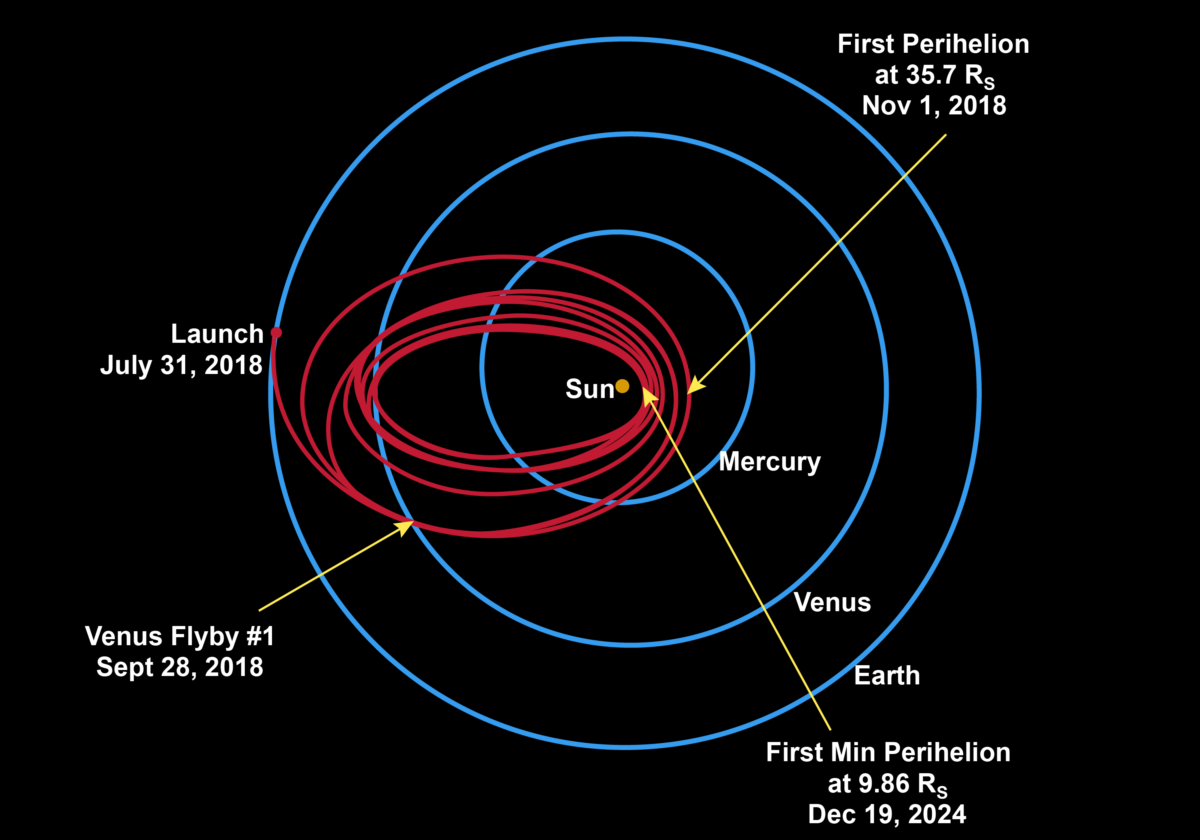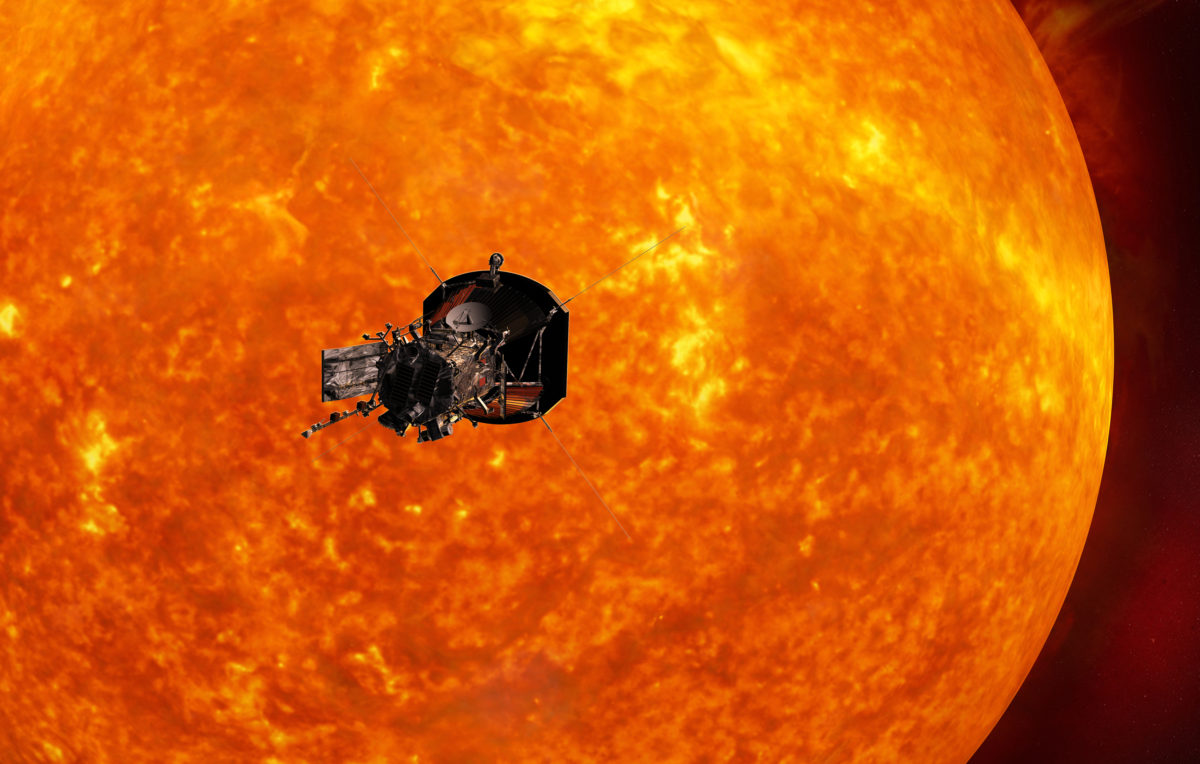For the first time in the agency’s history, NASA will launch a probe toward the sun. For science!
The groundbreaking mission will launch the Parker Solar Probe to a distance of within 4 million miles of the Sun. The probe will become the first human object to get that close to our host star and get seven times closer than any probe before it.
The mission will launch from Cape Canaveral Air Force Station on July 18th, 2018 atop a United Launch Alliance Atlas V rocket. The probe is named after Prof. Eugene Parker, a University of Chicago physicist known for his illuminating research into the Sun.
“This marks the first time a NASA spacecraft has been named for a living individual, and I am very excited to be personally involved,” said Thomas Zurbuchen, associate administrator for NASA’s Science Mission Directorate in Washington.“Gene Parker has been an inspiration to an entire generation of scientists, including me. Having his name on humanity’s first mission to a star is a fitting legacy.”
The Parker Solar Probe will face a hellish journey through the inferno of heat and cosmic rays. During its journey, the probe will use Venus for a gravity assist and then blast off at 118 miles-per-second to begin its 24 orbits of the Sun.
“Parker Solar Probe will perform its scientific investigations in a hazardous region of intense heat and solar radiation,” said NASA. “The spacecraft will fly close enough to the sun to watch the solar wind speed up from subsonic to supersonic, and it will fly through the birthplace of the highest-energy solar particles.”
The goal? To begin to understand how the Sun and its violent atmosphere affects life here on this planet.
The Sun’s Corona, as its atmosphere, is the ultimate destination of the Parker Solar Probe and it’s currently described by scientists at the University of Chicago’s William Eckhardt Research Center as “unstable.” The Corona is the layer that extends millions of miles from the star’s surface and is visible during total solar eclipses.

“Today, this is finally possible with cutting-edge thermal engineering advances that can protect the mission on its dangerous journey,” said a statement on the agency’s website. “Parker Solar Probe will carry four instrument suites designed to study magnetic fields, plasma, and energetic particles, and image the solar wind”
Scientists and researchers want to determine why the Sun’s corona is hotter than the Sun’s surface. Off the Sun’s Corona emit extreme solar winds that can reach up to a million miles an hour and NASA wants to unlock the mysteries of these solar winds.
NASA’s reasons for studying the Sun and solar wind:
-
The sun is the only star we can study up close. By studying this star we live with, we learn more about stars throughout the universe.
-
The sun is a source of light and heat for life on Earth. The more we know about it, the more we can understand how life on Earth developed.
-
The sun also affects Earth in less familiar ways. It is the source of the solar wind; a flow of ionized gases from the sun that streams past Earth at speeds of more than 500 km per second (a million miles per hour).
-
Disturbances in the solar wind shake Earth’s magnetic field and pump energy into the radiation belts, part of a set of changes in near-Earth space known as space weather.
-
Space weather can change the orbits of satellites, shorten their lifetimes, or interfere with onboard electronics. The more we learn about what causes space weather – and how to predict it – the more we can protect the satellites we depend on.
-
The solar wind also fills up much of the solar system, dominating the space environment far past Earth. As we send spacecraft and astronauts further and further from home, we must understand this space environment just as early seafarers needed to understand the ocean.
Image Credits: NASA









